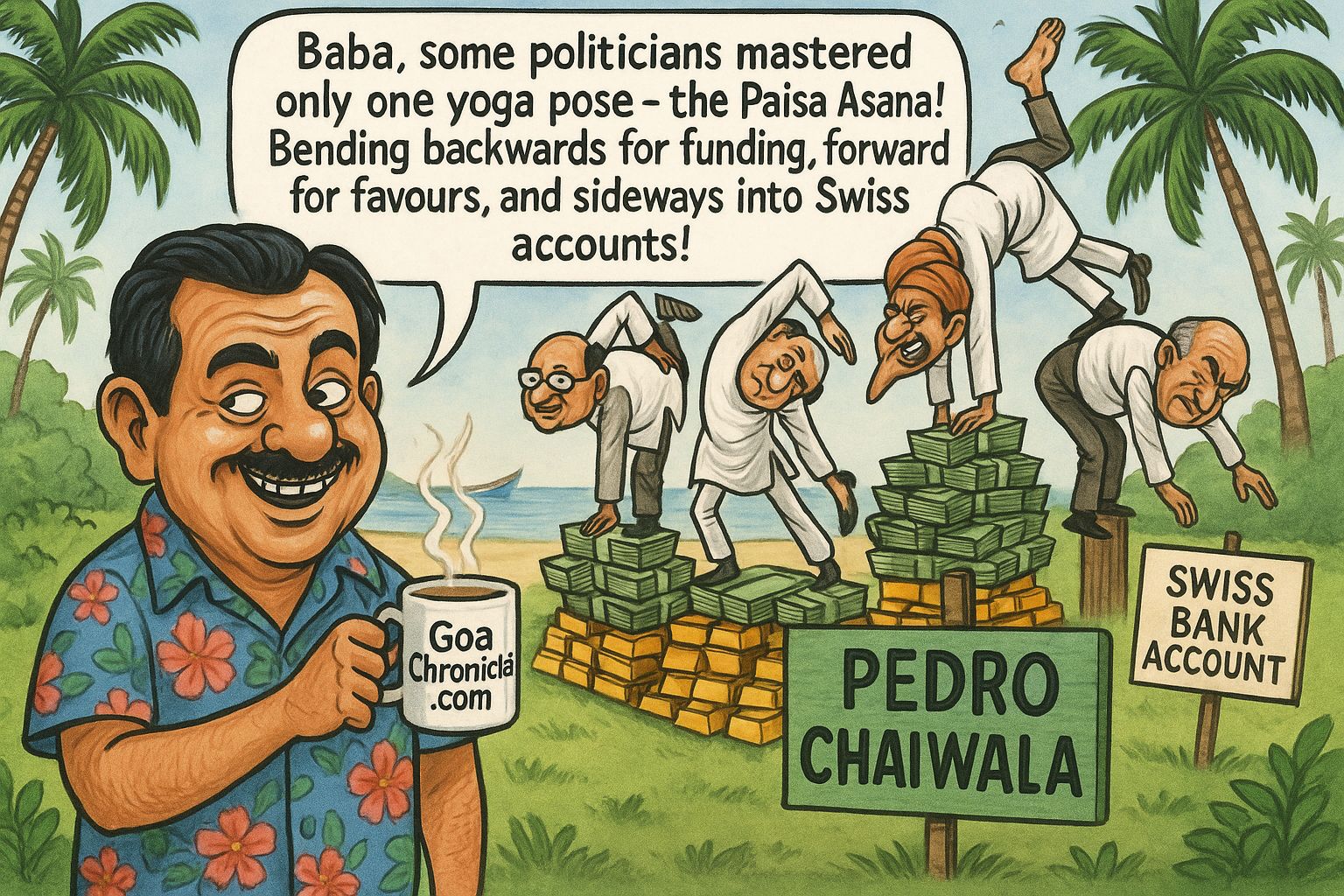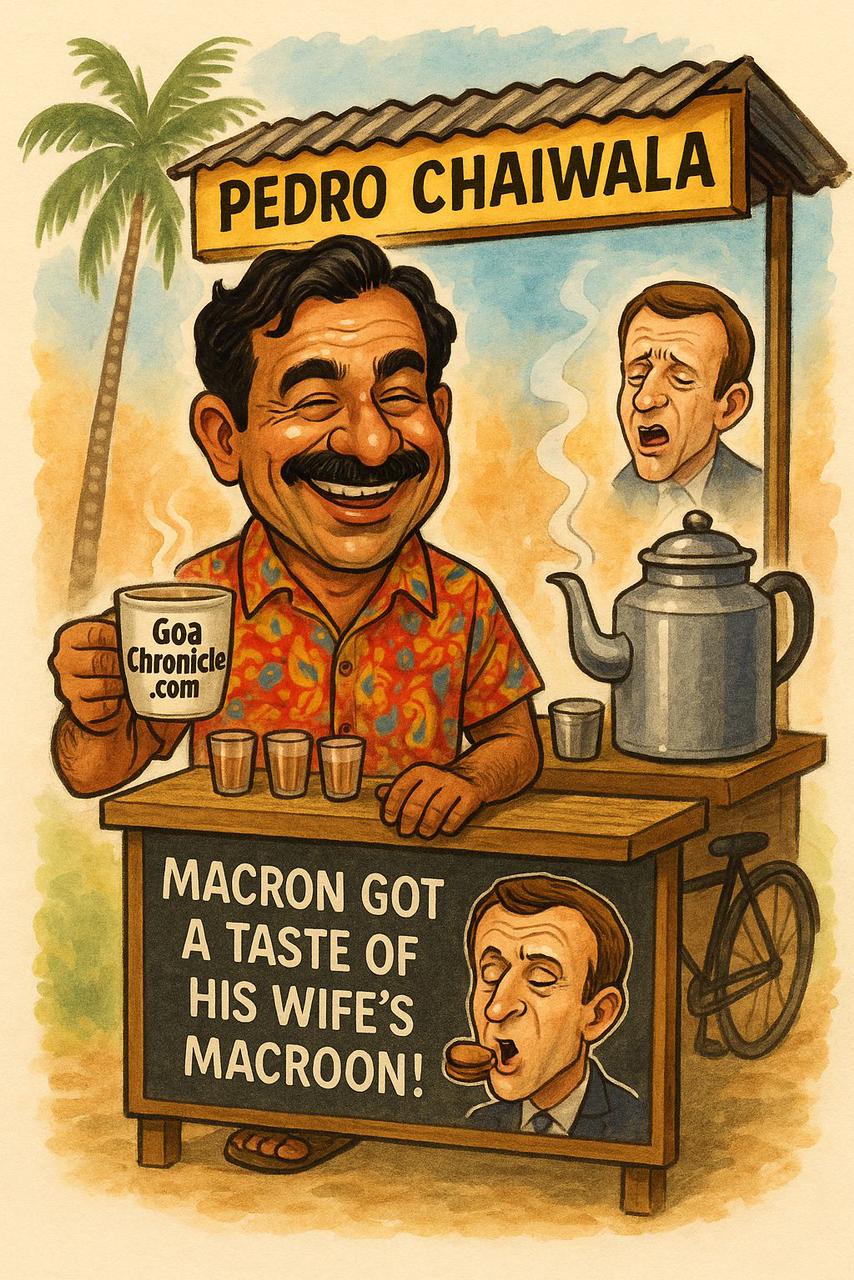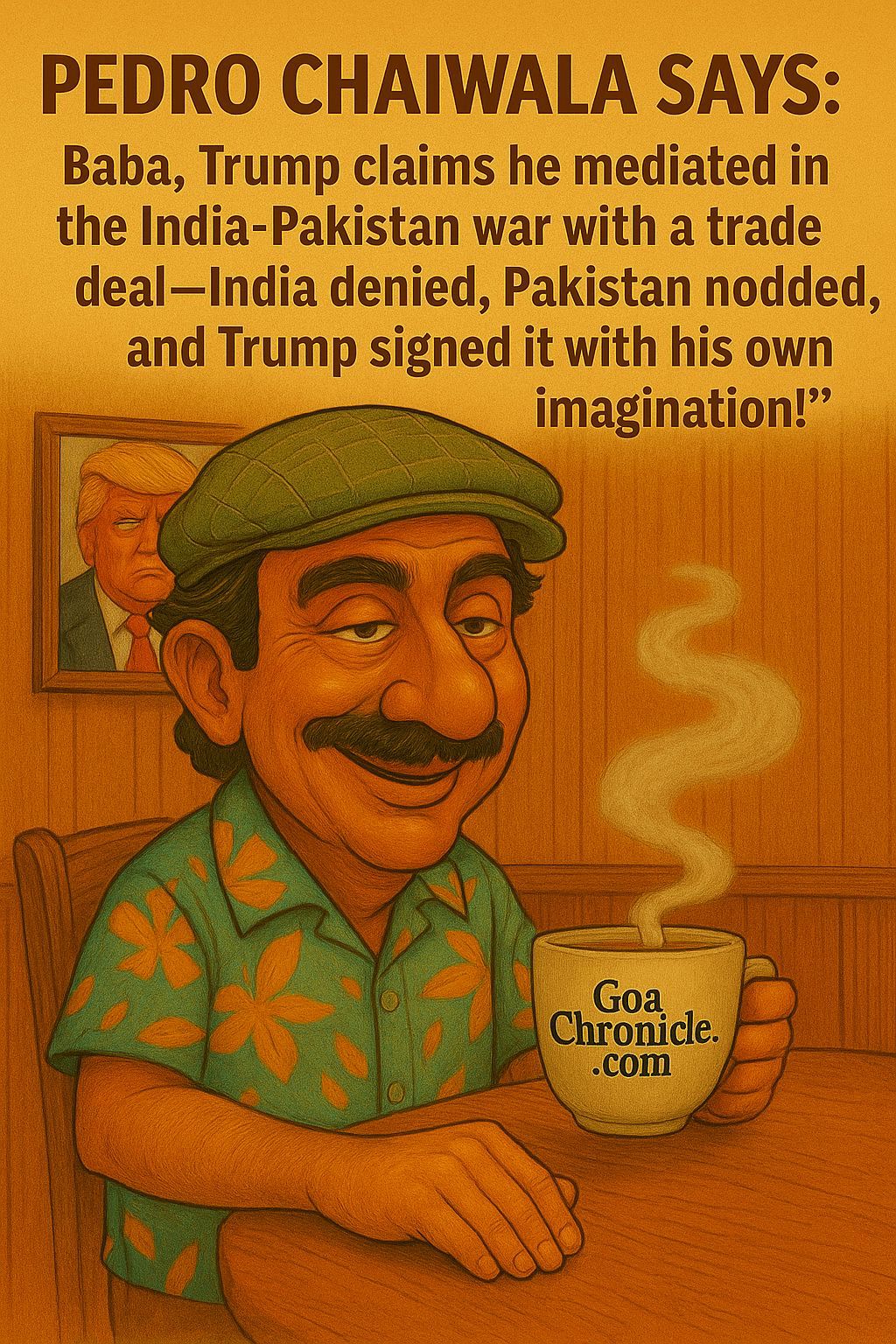The imposition of reciprocal tariffs by U.S. President Donald Trump, announced on 2nd April, 2025 and set to take effect in phases starting 5th April and 9th April, 2025, introduces a 26% tariff on Indian goods entering the United States (with some exemptions like pharmaceuticals and energy products, details of which are given here under).
This policy, part of Trump’s broader “Liberation Day” economic strategy, aims to address the U.S. trade deficit and perceived imbalances in global trade reciprocity mainly with CCP occupied PRC in focus as trade secretary Scott Bessent stated unambiguously.
Tariffs by US would be impacting CCP occupied PRC very badly while an ally like India will suffer some minimal collateral damage.
For India, a key U.S. trading partner with a trade surplus of approximately $46 billion, this tariff will have multifaceted economic, sectoral, and strategic impacts.
Here is a detailed analysis of its potential effects on India based on preliminary information and basic economic reasoning.
First –
Economic Impact
Export Reduction and Trade Balance
India’s exports to the U.S., valued at $74 billion in 2024, constitute about 18% of its total goods exports.
So 26% tariff could reduce these exports by an estimated $2 billion to $7 billion annually, according to analyses from India Ratings and Research (Ind-Ra) and Citi Research.
This translates to a potential GDP growth reduction of 5-10 basis points at its unmitigated worst from the current estimate of 6.6% for FY 2025-26.
The U.S. is India’s largest export market, and a decline in export revenue could narrow India’s trade surplus with the U.S., impacting foreign exchange reserves (currently the world’s fourth largest, covering 11 months of imports) but this impact is not so critical as we would see later in this note.
Inflation and Cost Pressures
While the tariff directly affects Indian exports, retaliatory measures or global supply chain disruptions could increase the cost of imported components for Indian industries (e.g., electronics, auto parts).
This might lead to mild inflationary pressure domestically, though India’s reliance on domestic consumption (rather than exports, which are only 2.2% of GDP to the U.S.) may cushion the broader economy.
Stock Market and Investor Sentiment
Indian stock markets, already correcting from highs (e.g., BSE Sensex down 14% from 86,000), could face short-term volatility due to global risk aversion and foreign institutional investor (FII) outflows.
Experts note a 1.5% drop in Gift Nifty following the tariff announcement, signaling reactive negative jerk.
Long-term outlooks (e.g. Morgan Stanley’s Sensex target of 1,05,000 by year-end) suggest resilience if fundamentals improve.
Now –
Sectoral Impact
The tariff’s impact varies across industries based on their exposure to the U.S. market and the tariff differential (gap between U.S. and Indian tariffs).
Key Sectors
Electronics
(15.6% of exports to US, valued at ~$14 billion)
Facing a 7.2% tariff gap, electronics exports could see reduced competitiveness.
However, the U.S.’s prior low tariffs (0.41% average) mean the 26% hike is significant, potentially costing $2-3 billion in lost exports unless firms absorb costs or shift markets.
Gems and Jewellery
(11.5% of total exports to US, valued at ~$9 billion USD)
With a 13.3% tariff differential, this sector faces a steep cost increase. The 26% tariff could erode India’s edge in this labor-intensive industry, though diversification to other markets (e.g., Middle East) might mitigate losses.
Pharmaceuticals
(11% of our exports to US, ~$9 billion)
Exempt from the 26% tariff, this sector is a bright spot. India’s generic drug exports, a third of which go to the U.S., remain unaffected, potentially boosting shares of Indian pharma firms (up nearly 5% post-announcement).
This exemption reflects the U.S.’s reliance on affordable Indian generics amid healthcare cost concerns in US. For example, drugs like antibiotics, antiretrovirals, and oncology treatments are likely included, as disruptions could spike U.S. drug prices.
Indian pharma companies (e.g., Sun Pharma, Dr. Reddy’s) saw share price gains of nearly 5% post-announcement, expressing market confidence in their stability.
This exemption ensures continued upward export growth in this sector, potentially offsetting losses elsewhere as we shall factor in while concluding.
Energy Products
While specifics are less detailed, this likely covers petroleum products, biofuels, or renewable energy components (e.g., solar panel parts).
India exported $2-3 billion in refined petroleum to the U.S. in 2024, and the exemption may aim to stabilize U.S. energy prices amid global volatility (e.g., OPEC dynamics).
Firms like Reliance Industries, a major player in refining, benefit, maintaining steady revenue streams.
This also aligns with U.S.-India energy cooperation under frameworks like the Strategic Energy Partnership.
These two exemptions reduce the tariff’s overall dent, sparing roughly $11-12 billion of India’s $74 billion U.S. exports from the 26% hike, cushioning the economic blow.
Automobiles and Auto Parts
Auto parts face a 25% tariff from a prior March 26, 2025 order, not the new 26% reciprocal tariff.
Full vehicles face a 23.1% tariff gap, and the additional 25% on foreign-made cars (effective 3rd April) could hit firms like Tata Motors.
Exports may drop, though the impact is limited as U.S. auto exports are a smaller share of total exports.
Textiles and Apparel
(e.g., $2.76 billion in fabrics, carpets)
With a 6.59% tariff gap, textiles face moderate pressure.
Carpets (58% of exports to the U.S.) are particularly vulnerable, but India’s lower 26% tariff compared to competitors like Vietnam (46%) could provide a relative edge.
Agriculture and Allied Sectors
(e.g., $2.58 billion in seafood)
Seafood faces a 27.83% tariff gap, potentially losing market share to un-tariffed competitors.
Dairy ($181 million, 38.23% gap) and edible oils ($199 million, 10.67% gap) could also see significant cost hikes, though rice and tobacco may fare better due to lower relative tariffs.
Huge Domestic Market is very much poised to absorb these products. So its impact is not that worrisome.
Footwear
($457 million)
A 15.56% tariff gap makes Indian footwear pricier, risking a shift to alternatives from other nations.
Last –
Strategic and Policy Implications
Trade Negotiations
India and the U.S. aim to finalize the first phase of a bilateral trade agreement by September-October 2025, targeting $500 billion in two-way trade by 2030. The tariff pressure may force India to accelerate tariff cuts on $23 billion of U.S. imports (e.g., motorcycles, bourbon, almonds, cashew), as already proposed, to secure concessions. But it would be prudent not to reduce tariff on bourbon.
Diversification Opportunities
Higher tariffs on CCP occupied China (34%) and Vietnam (46%) could shift U.S. sourcing to India in textiles, apparel, and iron/steel, where India has manufacturing competence. This aligns with global supply chain diversification trends. So these sectors are likely to get boosted.
Textiles and Apparel
The U.S. imposes higher tariffs on competitors like Vietnam (46%) and CCP occupied China (34%) compared to India’s 26%. This relative advantage could shift U.S. buyers toward Indian fabrics, carpets, and garments (e.g., $2.76 billion in exports). Firms in Tiruppur or Surat could ramp up production to capture this market share.
Iron and Steel
With CCP occupied China facing steeper tariffs, India’s steel exports (e.g., $1-2 billion to the U.S.) could grow. Companies like Tata Steel or JSW Steel might benefit if U.S. construction or manufacturing sectors seek alternatives.
Electronics and Components
As global firms diversify away from CCP occupied China, India’s nascent electronics manufacturing (with the PLI scheme support) could attract investment. The U.S. might source more semiconductors or consumer electronics from India, especially if tariffs persist.
Other Markets – The Alternatives
Beyond the U.S., India could target the EU, Middle East, or ASEAN for gems, jewellry, and agri-products (e.g., seafood), offsetting U.S. losses.
For instance, the UAE-India CEPA (Comprehensive Economic Partnership Agreement) could boost jewelry exports by $1-2 billion annually, as is the trend in last couple of years.
Strategic Edge
India’s lower export-to-GDP reliance (2.2% to the U.S. vs. Vietnam’s 25.1%) and improving supply chain infrastructure (e.g., via PM Gati Shakti) position it well to seize these opportunities.
Domestic Policy Response
India may reduce its own tariffs on imports (e.g., from 17% average to 10.66% post-2025-26 Budget) to avoid retaliation and boost U.S. exports, as seen with recent cuts on Harley-Davidson bikes (50% to 30-40%).
However, this could challenge protectionist policies like “Make in India” to an extent in certain cases.
Global Trade War Risks
If other nations retaliate against U.S. tariffs, India could face secondary effects like excess capacity dumping (e.g., from CCP occupied China), slowing private investment and economic growth already hampered by sluggish capex.
How can India overcome the adverse impact and turn this threat into opportunity?
Relative Position and Mitigation
Comparative Advantage
India’s 26% tariff is lower than China (34%), Vietnam (46%), and others, positioning it better among Asian peers.
Nomura reports suggest India’s export-to-GDP exposure to the U.S. (2.2%) is far less than Vietnam’s (25.1%), reducing vulnerability.
Resilience Factors
India’s economy, driven by domestic consumption, is less export-dependent than peers, and its forex reserves provide a buffer.
As of early 2025, India’s forex reserves stand at approximately $700 billion, ranking fourth globally behind CCP occupied China, Japan, and Switzerland (per IMF and RBI data). This includes foreign currency, gold, and Special Drawing Rights (SDRs).
This is equivalent to “Covering 11 months of imports” – it means these reserves can finance India’s entire import bill (goods and services, roughly $60-65 billion monthly) for 11 months without external borrowing or export earnings.
This is a key indicator of economic resilience, far exceeding the IMF’s recommended 3-month threshold.
A potential $2-7 billion export loss to the U.S. is manageable against this forex reserves backdrop.
The reserves provide a cushion to stabilize the rupee (currently around 85-86 to the USD) and fund any trade deficit widening, reducing the risk of a BOP balance-of-payments crisis.
Analysts from SBI, Goldman Sachs, and Morgan Stanley project a modest 3-3.5% export reduction, offset by diversification and innovation.
Conclusion
The Trump tariff will challenge India’s export-driven sectors like electronics, gems, and agriculture, with an estimated $2-7 billion annual loss and a slight GDP growth dip. However, exemptions (pharma), lower tariffs relative to competitors, and ongoing trade talks offer mitigation avenues. India’s strategic response—balancing tariff concessions, market diversification, and domestic resilience—will determine the long-term impact. While short-term disruptions are likely, India’s economic fundamentals suggest it can weather this storm better than more export-reliant Asian economies, provided it adapts swiftly. In fact, this threat can be turned into opportunity.
Here’s a plausible scenario by December 2025 or mid-2026:
Economic Stabilization
Export losses stabilize at $3-5 billion annually (mid-range of estimates), offset by a 10-15% growth in pharma exports ($1-1.5 billion) and diversification gains in textiles/steel ($1-2 billion).
GDP growth dips slightly to 6.4-6.5% in FY26 but rebounds to 6.7-6.8% by mid-2026 as new markets mature.
Inflation remains moderate (4-5%), supported by forex reserves and RBI interventions, with the rupee settling at 86-88 to the USD.
Sectoral Shifts
Pharma and energy exports thrive, with pharma potentially hitting $10-11 billion to the U.S. Textiles and steel see modest U.S. gains (5-10% growth), while electronics and gems face slower recovery unless costs are absorbed or new markets open.
Agriculture (e.g., seafood, dairy) may lose $500 million to $1 billion in U.S. sales but stabilize via domestic consumption or EU/ASEAN exports.
Trade Agreement Impact
If the U.S.-India trade deal’s first phase concludes by October 2025, India might secure tariff relief on $10-15 billion of exports (e.g., electronics, apparel) in exchange for cutting duties on U.S. goods like motorcycles or almonds.
Two-way trade could reach $300-350 billion by 2026, en route to the $500 billion 2030 goal.
Stock Market and Investment
The Sensex, after short-term volatility (e.g., 75,000-78,000 in mid-2025), could climb toward 90,000-95,000 by late 2025, driven by pharma, IT, and domestic consumption stocks. FII outflows ($10-15 billion in 2025) reverse by 2026 as global confidence in India’s resilience grows.
Global Positioning
India emerges as a relative winner in a tariff-war landscape, gaining from CCP occupied China’s and Vietnam’s steeper losses.
However, risks like a broader trade war or U.S. recession could cap gains, slowing private capex recovery (currently at 10-11% growth).
By late 2025 or 2026, India likely absorbs the tariff shock with minimal long-term damage, leveraging exemptions, reserves, and diversification.
The settled picture shows a slightly reoriented export mix—stronger in pharma and energy, weaker in agriculture and gems—with growth steadying at 6.5-7%.
Success hinges on swift trade negotiations and market pivots, but India’s fundamentals suggest resilience rather than crisis.
Trump Tariffs would likely prove blessings in disguise. For both the nations.
This is a golden opportunity for both these democracies committed to merit and openness.
By

Viren S Doshi
Geopolitical Analyst and Finfluencer
Ahmedabad Gujarat India
On X – @Viren_Doshi
[email protected]
































